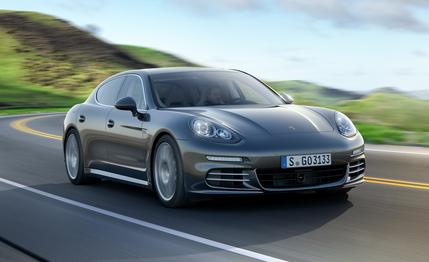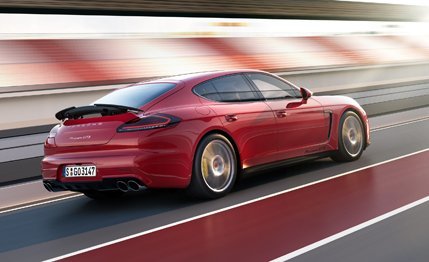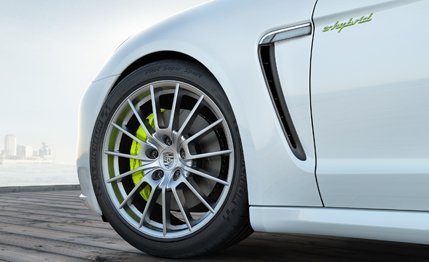 First Drive Review
First Drive Review
In the realm of premium sports cars, Porsche takes a back seat to no one. But when it comes to back seats, Porsche isn’t the first marque that springs to mind. Every person geeked on cars knows that premium sedans with generously proportioned aft quarters hail from the likes of Rolls-Royce, Mercedes, Audi, Jaguar, and BMW. Porsche builds light, agile two-passenger sports cars, right?
Well, you can hold the dachshund-on-wheels quips and the 911-stretch-limo jokes. Porsche is making a tidy profit selling its five-door, four-seat Panamera luxury sedan. Meaning buyers, particularly in China, which is now the Panamera’s largest market, don’t seem to mind the big Porsche’s proportions at all. With its 911-inspired nose and tail, the Panamera stands out in a sea of sedan sameness. Together with the once equally unlikely Cayenne SUV, the two products handily outsell Porsche’s 911, Boxster, and Cayman sports cars worldwide.

Going to Great Lengths
Originally introduced for the 2010 model year, the 2014 Panamera receives a mid-cycle freshening, which is thorough enough that Porsche has decided to dub the car Panamera II. (We will refrain from using this naming scheme, however.) If you thought the Ford F-150 came in every nuance and flavor under the sun, the 2014 Panamera lineup has likewise ballooned—to nine models available in two wheelbases and powered by five different engines. There are some appearance updates—a more-teardropesque shape to the headlamps, bigger nostrils in the front fascia, a flatter liftgate window, lower mounting for the rear license plate, and revised taillamps—but you’d have to be a Panamerologist to notice without the previous-year car alongside for reference.
Likewise, the well-tailored cabin carries forward the upscale feel. It’s surprisingly roomy, with ample leg- and headroom in all four seating positions, even in the standard-wheelbase version. Your six-foot-two author had no trouble fitting in the back when the driver’s seat was set to his preferences. But the big news for 2014 is the addition of two stretched Executive models. These add another 5.9 inches of wheelbase—all of which is dedicated to the rear seats, which move fore-and-aft and recline, with optional fold-down picnic tables. (Porsche appears to have declined to match the 2014 Mercedes S-class’s nearly horizontally reclining seats with hot-stone massage, as well as its fragrance dispenser.)

Revised Engine Lineup
Although the 3.6-liter V-6 (up slightly to 310 horsepower) continues as the base powerplant for the Panamera and all-wheel-drive Panamera 4, the Panamera S and 4S and the new, stretch 4S Executive get a new twin-turbo 3.0-liter V-6. The blown six-banger replaces the naturally aspirated 4.8-liter V-8 in these models, key to success in China and other countries where displacement taxes ramp up drastically on anything larger than 3.0 liters. Porsche comes by its 3.0-liter V-6 by chopping a pair of cylinders off its V-8, so this engine has 90-degree cylinder banks with a balance shaft in the sump to quell vibration. At 420 horsepower, its output is up by 20 compared with last year’s base 4.8-liter V-8.
The V-6 turbo has ample low- and midrange torque, although acceleration feels perhaps a half-second slower to 60 as the otherwise responsive turbos need a moment to spool. Not that nouveau riche execs reclining in business class will notice, but the turbo V-6 lacks some of the delicious rumble, crackle, and pop of the 4.8-liter V-8, replacing them with a slightly shrill whine at higher revs that implies rented Taurus more than purchased Porsche. Like the V-8, the turbo V-6 is available with an optional sport exhaust that at least restores a little engine character. Official EPA estimates are not yet available, but Porsche claims the 3.0-liter twin-turbo V-6 is 18 percent more fuel efficient than the 4.8-liter V-8.